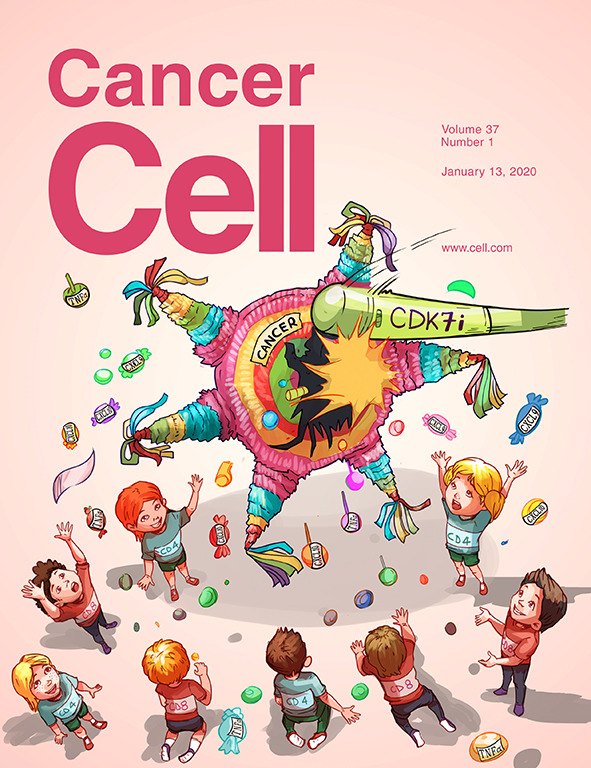调节肿瘤相关巨噬细胞的命运
IF 44.5
1区 医学
Q1 CELL BIOLOGY
引用次数: 0
摘要
肿瘤相关巨噬细胞(tam)是肿瘤进展的关键参与者,但它们在这一过程中的作用仅被部分理解。在这一期的《Cancer Cell》中,Sheban等人证明了锌指E-box-binding homeobox 2 (ZEB2)作为一个主调控因子,将tam重编程为促肿瘤表型,并且ZEB2的治疗靶向具有抗肿瘤活性。本文章由计算机程序翻译,如有差异,请以英文原文为准。
Regulating the fate of tumor-associated macrophages
Tumor-associated macrophages (TAMs) are key players in tumor progression, yet their role in this process remains only partially understood. In this issue of Cancer Cell, Sheban et al. demonstrate that zinc finger E-box-binding homeobox 2 (ZEB2) acts as a master regulator that reprograms TAMs toward a pro-tumor phenotype and that therapeutic targeting of ZEB2 exhibits anti-tumor activity.
求助全文
通过发布文献求助,成功后即可免费获取论文全文。
去求助
来源期刊

Cancer Cell
医学-肿瘤学
CiteScore
55.20
自引率
1.20%
发文量
179
审稿时长
4-8 weeks
期刊介绍:
Cancer Cell is a journal that focuses on promoting major advances in cancer research and oncology. The primary criteria for considering manuscripts are as follows:
Major advances: Manuscripts should provide significant advancements in answering important questions related to naturally occurring cancers.
Translational research: The journal welcomes translational research, which involves the application of basic scientific findings to human health and clinical practice.
Clinical investigations: Cancer Cell is interested in publishing clinical investigations that contribute to establishing new paradigms in the treatment, diagnosis, or prevention of cancers.
Insights into cancer biology: The journal values clinical investigations that provide important insights into cancer biology beyond what has been revealed by preclinical studies.
Mechanism-based proof-of-principle studies: Cancer Cell encourages the publication of mechanism-based proof-of-principle clinical studies, which demonstrate the feasibility of a specific therapeutic approach or diagnostic test.
 求助内容:
求助内容: 应助结果提醒方式:
应助结果提醒方式:


